 W
WA steam engine is a heat engine that performs mechanical work using steam as its working fluid. The steam engine uses the force produced by steam pressure to push a piston back and forth inside a cylinder. This pushing force is transformed, by a connecting rod and flywheel, into rotational force for work. The term "steam engine" is generally applied only to reciprocating engines as just described, not to the steam turbine.
 W
WThe 5AT Advanced Technology steam locomotive was a conceptual design conceived by the British engineer David Wardale, and first described in his definitive work on modern steam, The Red Devil and Other Tales from the Age of Steam.
 W
WAdvanced steam technology reflects an approach to the technical development of the steam engine intended for a wider variety of applications than has recently been the case. Particular attention has been given to endemic problems that led to the demise of steam power in small- to medium-scale commercial applications: excessive pollution, maintenance costs, labour-intensive operation, low power/weight ratio, and low overall thermal efficiency; where steam power has generally now been superseded by the internal combustion engine or by electrical power drawn from an electrical grid. The only steam installations that are in widespread use are the highly efficient thermal power plants used for generating electricity on a large scale. In contrast, the proposed steam engines may be for stationary, road, rail or marine use.
 W
WAn aeolipile, aeolipyle, or eolipile, also known as a Hero's engine, is a simple, bladeless radial steam turbine which spins when the central water container is heated. Torque is produced by steam jets exiting the turbine. The Greco-Egyptian mathematician and engineer Hero of Alexandria described the device in the 1st century AD, and many sources give him the credit for its invention.
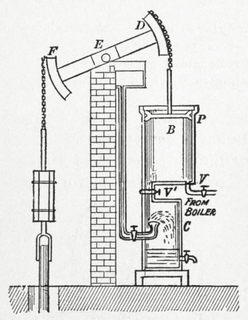 W
WA beam engine is a type of steam engine where a pivoted overhead beam is used to apply the force from a vertical piston to a vertical connecting rod. This configuration, with the engine directly driving a pump, was first used by Thomas Newcomen around 1705 to remove water from mines in Cornwall. The efficiency of the engines was improved by engineers including James Watt, who added a separate condenser; Jonathan Hornblower and Arthur Woolf, who compounded the cylinders; and William McNaught, who devised a method of compounding an existing engine. Beam engines were first used to pump water out of mines or into canals, but could be used to pump water to supplement the flow for a waterwheel powering a mill.
 W
WA blowing engine is a large stationary steam engine or internal combustion engine directly coupled to air pumping cylinders. They deliver a very large quantity of air at a pressure lower than an air compressor, but greater than a centrifugal fan.
 W
WA boiler or steam generator is a device used to create steam by applying heat energy to water. Although the definitions are somewhat flexible, it can be said that older steam generators were commonly termed boilers and worked at low to medium pressure but, at pressures above this, it is more usual to speak of a steam generator.
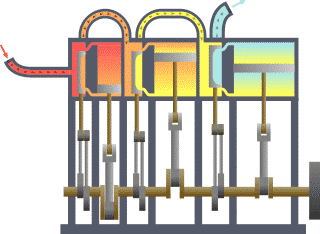 W
WA compound steam engine unit is a type of steam engine where steam is expanded in two or more stages. A typical arrangement for a compound engine is that the steam is first expanded in a high-pressure (HP) cylinder, then having given up heat and losing pressure, it exhausts directly into one or more larger-volume low-pressure (LP) cylinders. Multiple-expansion engines employ additional cylinders, of progressively lower pressure, to extract further energy from the steam.
 W
WA Corliss steam engine is a steam engine, fitted with rotary valves and with variable valve timing patented in 1849, invented by and named after the American engineer George Henry Corliss of Providence, Rhode Island.
 W
WThe Corliss Steam Engine on the Pawnee County Fairgrounds in Pawnee, Oklahoma is a Corliss steam engine that was built c. 1912. It and a twin sister engine were originally built for the Blackwell Zinc Co., of Blackwell, Oklahoma. It powered most of the electricity-powered machinery in the 1000-employee zinc smelter plant until the plant closed in 1973.
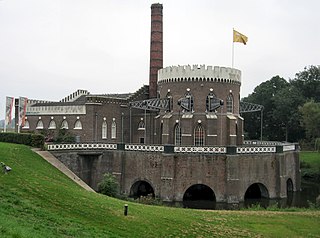 W
WA Cornish engine is a type of steam engine developed in Cornwall, England, mainly for pumping water from a mine. It is a form of beam engine that uses steam at a higher pressure than the earlier engines designed by James Watt. The engines were also used for powering man engines to assist the underground miners' journeys to and from their working levels, for winching materials into and out of the mine, and for powering on-site ore stamping machinery.
 W
WValve gear opens and closes valves in the correct order. In rotating engines valve timings can be driven by eccentrics or cranks, but in non-rotative beam engines these options are not available. In the Cornish engine valves are driven either manually or through ‘plug rods’ and tappets driven from the beam. This permits the insertions of delays at various points in the cycle, allowing a Cornish Engine to vary from one stroke in ten minutes, to ten or more strokes in one minute, but also leads to some less familiar components when compared with rotative engines.
 W
WThe Creusot steam hammer is a giant steam hammer built in 1877 by Schneider and Co. in the French industrial town of Le Creusot. With the ability to deliver a blow of up to 100 tons, the Creusot hammer was the most powerful in the world until 1891, when the Bethlehem Iron Company of the United States purchased patent rights from Schneider and built a steam hammer of almost identical design but capable of delivering a 125-ton blow.
 W
WA compound steam engine unit is a type of steam engine where steam is expanded in two or more stages. A typical arrangement for a compound engine is that the steam is first expanded in a high-pressure (HP) cylinder, then having given up heat and losing pressure, it exhausts directly into one or more larger-volume low-pressure (LP) cylinders. Multiple-expansion engines employ additional cylinders, of progressively lower pressure, to extract further energy from the steam.
 W
WThe Cyclone Mark V Engine is a steam engine in which the engine, steam generator, condenser and feed pump are integrated into a single compact unit. The company Cyclone Power Technologies of Pampano Beach, Florida was founded by inventor Harry Schoell to develop and market this engine. The Cyclone Mark V Engine is a six cylinder radial uniflow engine of two inch bore and two inch stroke. Pistons are single acting. The engine is claimed to produce 100 hp at 3600 rpm using steam at 3200 psi and 1200 °F.
 W
WThe Cyclone Waste Heat Engine (WHE) is a small steam engine developed to produce power from steam created from waste heat. It is an offshoot of the development of the Cyclone Mark V Engine by the company Cyclone Power Technologies of Pampano Beach, Florida. The original versions were designed by inventor Harry Schoell, founder of Cyclone Power Technologies and the later versions have been designed by the Ohio State University Center for Automotive Research (OSU-CAR).
 W
WA compound steam engine unit is a type of steam engine where steam is expanded in two or more stages. A typical arrangement for a compound engine is that the steam is first expanded in a high-pressure (HP) cylinder, then having given up heat and losing pressure, it exhausts directly into one or more larger-volume low-pressure (LP) cylinders. Multiple-expansion engines employ additional cylinders, of progressively lower pressure, to extract further energy from the steam.
 W
WRichard Trevithick was a British inventor and mining engineer from Cornwall, UK. The son of a mining captain, and born in the mining heartland of Cornwall, Trevithick was immersed in mining and engineering from an early age. He was an early pioneer of steam-powered road and rail transport, and his most significant contributions were the development of the first high-pressure steam engine and the first working railway steam locomotive. The world's first locomotive-hauled railway journey took place on 21 February 1804, when Trevithick's unnamed steam locomotive hauled a train along the tramway of the Penydarren Ironworks, in Merthyr Tydfil, Wales.
 W
WThe first recorded rudimentary steam engine was the aeolipile described by Heron of Alexandria in 1st-century Roman Egypt. Several steam-powered devices were later experimented with or proposed, such as Taqi al-Din's steam jack, a steam turbine in 16th-century Ottoman Egypt, and Thomas Savery's steam pump in 17th-century England. In 1712, Thomas Newcomen's atmospheric engine became the first commercially successful engine using the principle of the piston and cylinder, which was the fundamental type of steam engine used until the early 20th century. The steam engine was used to pump water out of coal mines.
 W
WA marine steam engine is a steam engine that is used to power a ship or boat. This article deals mainly with marine steam engines of the reciprocating type, which were in use from the inception of the steamboat in the early 19th century to their last years of large-scale manufacture during World War II. Reciprocating steam engines were progressively replaced in marine applications during the 20th century by steam turbines and marine diesel engines.
 W
WA model steam engine is a small steam engine not built for serious use. Often they are built as an educational toy for children, in which case it is also called a toy steam engine, or for live steam enthusiasts. Between the 18th and early 20th centuries, demonstration models were also in use at universities and engineering schools, frequently designed and built by students as part of their curriculum.
 W
WA steam motor is a form of steam engine used for light locomotives. They represented one of the final developments of the steam locomotive, in the final decades of the widespread use of steam power.
 W
WThe atmospheric engine was invented by Thomas Newcomen in 1712, and is often referred to simply as a Newcomen engine. The engine was operated by condensing steam drawn into the cylinder, thereby creating a partial vacuum which allowed the atmospheric pressure to push the piston into the cylinder. It was the first practical device to harness steam to produce mechanical work. Newcomen engines were used throughout Britain and Europe, principally to pump water out of mines. Hundreds were constructed through the 18th century.
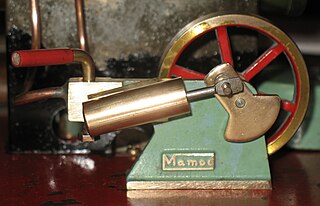 W
WAn oscillating cylinder steam engine is a simple steam-engine design that requires no valve gear. Instead the cylinder rocks, or oscillates, as the crank moves the piston, pivoting in the mounting trunnion so that ports in the cylinder line up with ports in a fixed port face alternately to direct steam into or out of the cylinder.
 W
WA pop-pop boat is a toy with a very simple steam engine without moving parts, typically powered by a candle or vegetable oil burner. The name comes from the noise made by some versions of the boats. Other names are putt-putt boat, crazy boat, flash-steamer, hot-air-boat, pulsating water engine boat. Around the world they may be called Can-Can-boot, Knatterboot, toc-toc, Puf-Puf boat, Poof Poof craft, Phut-Phut, or Pouet-Pouet.
 W
WA portable engine is an engine, either a steam engine or an internal combustion engine, that sits in one place while operating, but is portable and thus can be easily moved from one work site to another. Mounted on wheels or skids, it is either towed to the work site or moves there via self-propulsion.
 W
WPriming is a condition in the boiler of a steam locomotive in which water is carried over into the steam delivery. It may be caused by impurities in the water, which foams up as it boils, or simply too high a water level. It is harmful to the valves and pistons, as lubrication is washed away, and can be dangerous as any water collecting in the cylinders is not compressible and if trapped may fracture the cylinder head or piston.
 W
WA return connecting rod, return piston rod or double piston rod engine or back-acting engine is a particular layout for a steam engine.
 W
WA beam engine is a type of steam engine where a pivoted overhead beam is used to apply the force from a vertical piston to a vertical connecting rod. This configuration, with the engine directly driving a pump, was first used by Thomas Newcomen around 1705 to remove water from mines in Cornwall. The efficiency of the engines was improved by engineers including James Watt, who added a separate condenser; Jonathan Hornblower and Arthur Woolf, who compounded the cylinders; and William McNaught, who devised a method of compounding an existing engine. Beam engines were first used to pump water out of mines or into canals, but could be used to pump water to supplement the flow for a waterwheel powering a mill.
 W
WThe Quasiturbine or Qurbine engine is a proposed pistonless rotary engine using a rhomboidal rotor whose sides are hinged at the vertices. The volume enclosed between the sides of the rotor and the rotor casing provide compression and expansion in a fashion similar to the more familiar Wankel engine, but the hinging at the edges allows the volume ratio to increase. Unlike vane pumps, in which vane extension is generally important and against which the pressure acts to generate the rotation, the Quasiturbine contour seals have a minimal extension and the rotation does not result from pressure against these seals.
 W
WThomas Savery was an English inventor and engineer, born at Shilstone, a manor house near Modbury, Devon, England. He invented the first commercially used steam powered device, a steam pump which is often referred to as an "engine", although it is not technically an "engine". Savery's steam pump was a revolutionary method of pumping water, which solved the problem of mine drainage and made widespread public water supply practicable.
 W
WThomas Savery was an English inventor and engineer, born at Shilstone, a manor house near Modbury, Devon, England. He invented the first commercially used steam powered device, a steam pump which is often referred to as an "engine", although it is not technically an "engine". Savery's steam pump was a revolutionary method of pumping water, which solved the problem of mine drainage and made widespread public water supply practicable.
 W
WReciprocating engine cylinders are often classified by whether they are single- or double-acting, depending on how the working fluid acts on the piston.
 W
WStationary steam engines are fixed steam engines used for pumping or driving mills and factories, and for power generation. They are distinct from locomotive engines used on railways, traction engines for heavy steam haulage on roads, steam cars, agricultural engines used for ploughing or threshing, marine engines, and the steam turbines used as the mechanism of power generation for most nuclear power plants.
 W
WSteam-powered vessels include steamboats and steamships. Smaller steamboats were developed first. They were replaced by larger steamships which were often ocean-going. Steamships required a change in propulsion technology from sail to paddlewheel to screw to steam turbines. The latter innovation changed the design of vessels to one that could move faster through the water. Engine propulsion changed to steam turbine in the early 20th century. In the latter part of the 20th century, these, in turn, were replaced by gas turbines.
 W
WA steamship, often referred to as a steamer, is a type of steam-powered vessel, typically ocean-faring and seaworthy, that is propelled by one or more steam engines that typically move (turn) propellers or paddlewheels. The first steamships came into practical usage during the early 1800s; however, there were exceptions that came before. Steamships usually use the prefix designations of "PS" for paddle steamer or "SS" for screw steamer. As paddle steamers became less common, "SS" is assumed by many to stand for "steamship". Ships powered by internal combustion engines use a prefix such as "MV" for motor vessel, so it is not correct to use "SS" for most modern vessels.
 W
WThe sun and planet gear is a method of converting reciprocating motion to rotary motion and was used in the first rotative beam engines.
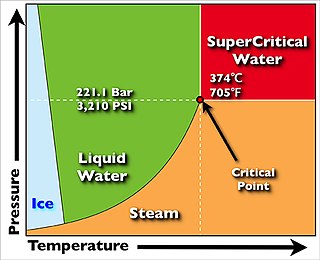 W
WA supercritical steam generator is a type of boiler that operates at supercritical pressure, frequently used in the production of electric power.
 W
WA table engine is a variety of stationary steam engine where the cylinder is placed on top of a table-shaped base, the legs of which stand on the baseplate which locates the crankshaft bearings. The piston rod protrudes from the top of the cylinder and has fixed to it a cross-head which runs in slides attached to, and rising from, the cylinder top. Long return rods connect the crosshead to the crankshaft, on which is fixed the flywheel.
 W
WA compound steam engine unit is a type of steam engine where steam is expanded in two or more stages. A typical arrangement for a compound engine is that the steam is first expanded in a high-pressure (HP) cylinder, then having given up heat and losing pressure, it exhausts directly into one or more larger-volume low-pressure (LP) cylinders. Multiple-expansion engines employ additional cylinders, of progressively lower pressure, to extract further energy from the steam.
 W
WA traction engine is a steam-powered tractor used to move heavy loads on roads, plough ground or to provide power at a chosen location. The name derives from the Latin tractus, meaning 'drawn', since the prime function of any traction engine is to draw a load behind it. They are sometimes called road locomotives to distinguish them from railway locomotives – that is, steam engines that run on rails.
 W
WTrip valve mechanisms are a class of steam engine valve gear developed to improve efficiency. The trip mechanism allows the inlet valve to be closed rapidly, giving a short, sharp cut-off. The valve itself can be a drop valve or a Corliss valve.
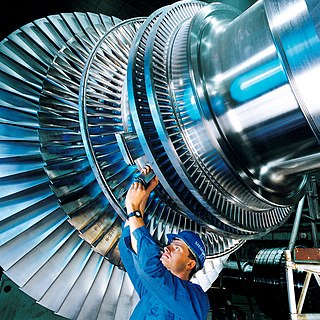 W
WA steam turbine is a device that extracts thermal energy from pressurized steam and uses it to do mechanical work on a rotating output shaft. Its modern manifestation was invented by Charles Parsons in 1884.
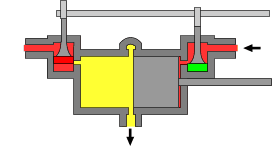 W
WThe uniflow type of steam engine uses steam that flows in one direction only in each half of the cylinder. Thermal efficiency is increased by having a temperature gradient along the cylinder. Steam always enters at the hot ends of the cylinder and exhausts through ports at the cooler centre. By this means, the relative heating and cooling of the cylinder walls is reduced.
 W
WThe uniflow type of steam engine uses steam that flows in one direction only in each half of the cylinder. Thermal efficiency is increased by having a temperature gradient along the cylinder. Steam always enters at the hot ends of the cylinder and exhausts through ports at the cooler centre. By this means, the relative heating and cooling of the cylinder walls is reduced.
 W
WThe valve gear of a steam engine is the mechanism that operates the inlet and exhaust valves to admit steam into the cylinder and allow exhaust steam to escape, respectively, at the correct points in the cycle. It can also serve as a reversing gear. It is sometimes referred to as the "motion".
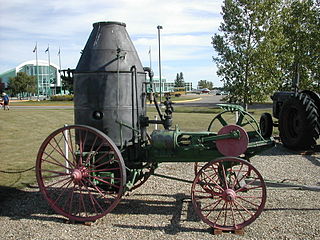 W
WThe Westinghouse Farm Engine was a small, vertical-boiler steam engine built by the Westinghouse Company that emerged in the late 19th century. In the transition from horses to machinery, small portable engines were hauled by horses from farm to farm to give power where it was needed. It provided power to agricultural machines such as sawmills, threshing machines, and corn shellers. Many small workshops used them as well.
 W
WArthur Woolf was a Cornish engineer, most famous for inventing a high-pressure compound steam engine. As such he made an outstanding contribution to the development and perfection of the Cornish engine.